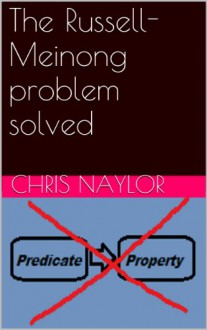The Russell-Meinong problem solved
by:
Chris Naylor (author)
If we say 'the round square is round' or 'Sherlock Holmes is a detective', do we succeed in attributing properties to objects?According to Meinong, we do; but Meinong's theory leads to a vastly inflated ontology of strange objects, and fails completely when faced with statements such as 'the...
show more
If we say 'the round square is round' or 'Sherlock Holmes is a detective', do we succeed in attributing properties to objects?According to Meinong, we do; but Meinong's theory leads to a vastly inflated ontology of strange objects, and fails completely when faced with statements such as 'the existent gold mountain is existent'. According to Russell, we don't; but Russell's theory entails that 'Sherlock Holmes is a detective' is as false as 'Sherlock Holmes is a plumber', which cannot be right.This is the Russell-Meinong problem: to give a correct analysis of statements in which predicates are applied to expressions that appear to refer to nonexistent objects. For over a hundred years, it has seemed that the Russellian and Meinongian theories are the only ones available.In this paper I offer a solution which is neither Russellian nor Meinongian. I argue that to solve the problem we have to reject the orthodox Fregean view of predication in favour of an alternative theory which I present. The alternative theory not only solves the problem of attributions to nonexistent objects, it also solves the problem of the Characterisation Principle, and sheds light on other areas of philosophy such as transworld identity and Anselm's Ontological Argument.This paper was originally published under the title "Philosophy's Greatest Blunder - why the orthodox theory of predication is wrong".
show less
Format: kindle
ASIN: B00CYAEFDC
Pages no: 53
Edition language: English
Series: Philosophy Papers (#1)

